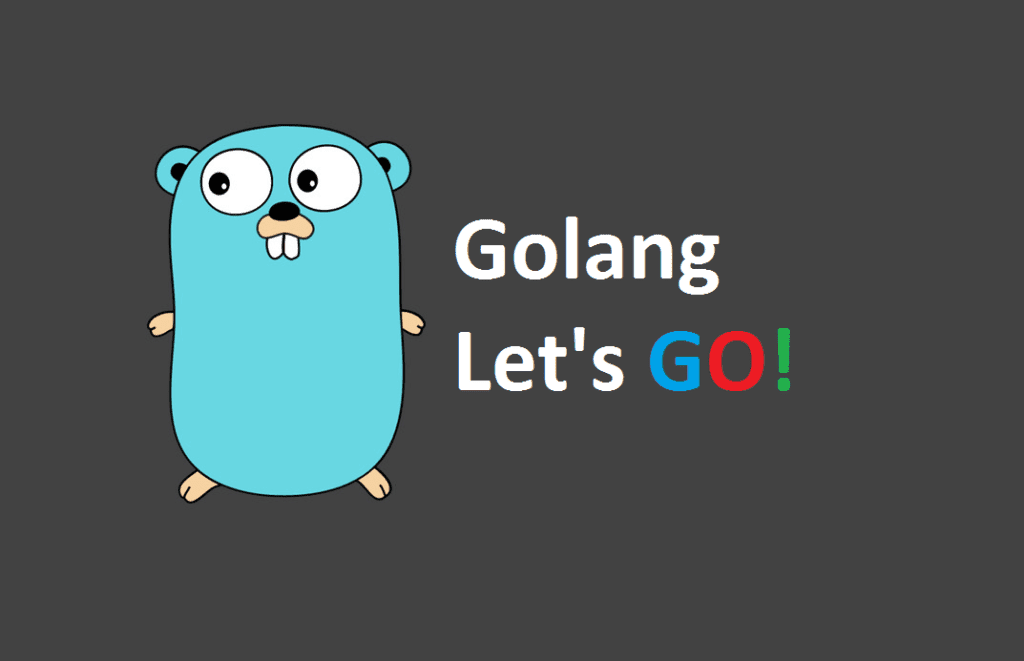Embarking on a journey into the realm of programming can be both exhilarating and overwhelming, especially for HR professionals seeking innovative solutions. Enter Go, the programming language designed by Google’s tech wizards to simplify complexity and enhance efficiency. In this exploration, we’ll uncover the power of Go through the lens of real-world HR scenarios, dissecting its features, comparing it with other languages, and delving into how it transforms the way companies manage their human resources.
Why GO is so magical?
The inception of the Go programming language occurred at Google, and although it originated there, it is now entirely open source and available for free to anyone interested in utilizing it. The language undergoes continuous enhancement, with new versions introduced approximately every six months. These updates bring forth not only new features but also performance enhancements and bug fixes, ensuring a dynamic and evolving ecosystem.
Go’s syntax draws inspiration from C and other C-style languages, but it distinguishes itself by prioritizing simplicity and conciseness. This emphasis on clarity in syntax contributes to a more straightforward and readable codebase. Additionally, Go is a strongly typed language, compiling into operating system-specific binary executables. This compilation process results in exceptionally fast runtime speeds, contributing to the language’s efficiency.
The versatility of Go extends to its applicability in diverse software development. While it can be used for various types of software, it has gained particular popularity among developers specializing in cloud-based services. Notable products developed with Go include Docker, Kubernetes, Fedora CoreOS, and numerous other offerings in the realm of cloud-based products and services. The language’s efficiency and performance make it a preferred choice for creating robust solutions in the ever-evolving landscape of cloud computing.
Some Prominent products crafted with GO:
Let’s delve deeper into the prominent products crafted with the Go programming language:
- Docker:
- Overview: Docker is a transformative platform that revolutionized the way applications are developed, shipped, and run. It provides a containerization approach, encapsulating applications and their dependencies into lightweight, portable containers.
- Go’s Role: Go played a pivotal role in the creation of Docker, influencing its core components. The language’s efficiency, simplicity, and concurrency support align seamlessly with Docker’s need for a robust and high-performance foundation.
- Kubernetes:
- Overview: Kubernetes, often abbreviated as K8s, is an open-source container orchestration system developed to automate the deployment, scaling, and management of containerized applications. It simplifies the complexities of container management in a distributed environment.
- Go’s Role: Kubernetes is a Go-native project, meaning it was primarily developed using the Go programming language. Go’s concurrency features have been instrumental in managing the intricate orchestration tasks inherent in deploying and scaling containerized applications.
- Fedora CoreOS:
- Overview: Fedora CoreOS is an emerging platform specifically designed for containerized applications. It combines the best elements of CoreOS Container Linux and Fedora Atomic Host, offering an optimized and minimal operating system for running container workloads.
- Go’s Role: Go is heavily utilized in the development of Fedora CoreOS, contributing to its efficiency and speed. The language’s ability to create statically compiled binaries is especially advantageous in the context of containerized applications.
How Go Enhances These Products:
- Efficiency and Performance: Go’s statically typed nature and compilation to binary executables contribute to the efficiency and performance of these products. Containers can start quickly, and the runtime speed is notably swift.
- Concurrency Support: Go’s concurrency model, with goroutines and channels, is particularly well-suited for managing concurrent tasks. This is crucial in container orchestration scenarios where multiple tasks need to be handled simultaneously.
- Simplicity and Readability: Go’s syntax, designed for simplicity and readability, enhances the maintainability of these complex systems. This is especially crucial in large-scale projects like Docker and Kubernetes, where code clarity is paramount.
- Open Source Ecosystem: Go’s open-source nature aligns with the principles of Docker, Kubernetes, and Fedora CoreOS. It encourages collaboration, community-driven development, and rapid innovation.
In essence, the marriage of Go with these products has resulted in a powerful synergy, where the language’s strengths in concurrency, efficiency, and simplicity have significantly contributed to the success and widespread adoption of Docker, Kubernetes, and Fedora CoreOS in the realm of containerized applications.
Real-World HR Impact with Go:
Let’s dive deeper into how Go, a programming language, had a real impact on three different companies, showcasing its versatility and efficiency in the realm of Human Resources (HR):
1. Company X – Web Development with Go:
- Situation: Company X, a rapidly growing tech firm with a diverse workforce, decided to update its HR portal to make processes like employee onboarding, performance analysis, and automation smoother.
- Go’s Role: Using Go’s net/http package, Company X quickly built a responsive and scalable HR portal. Go’s simple and clear syntax made it easy to define the paths (routing), and they utilized the Gorilla toolkit to add features like session management.
- Result: The outcome was an intuitive portal capable of handling many requests at the same time. This means that employees, even in large numbers, can access the portal simultaneously without slowing it down.
2. Company Y – Data Processing and Analysis:
- Situation: Company Y, a global conglomerate, faced the challenge of processing massive datasets for HR analytics, requiring timely and accurate insights.
- Go’s Role: Go’s encoding/csv package came to the rescue, helping Company Y parse large HR datasets efficiently. Moreover, Go’s standard library enabled them to process data concurrently, meaning they could work on multiple pieces of data at the same time without slowing down the overall analysis.
- Result: Company Y achieved timely and accurate HR analytics, thanks to Go’s capabilities in handling large datasets and concurrent data processing.
3. Company Z – Automation of HR Processes:
- Situation: Company Z, a startup focused on agility, wanted to automate various HR processes to streamline workflows and reduce administrative overhead.
- Go’s Role: Leveraging Go’s simplicity, Company Z used Go routines (a feature in Go for handling tasks concurrently) to automate routine HR tasks. From onboarding documentation to leave management, these tasks could now be handled simultaneously, improving efficiency.
- Result: Company Z successfully streamlined their HR processes, reducing the time and effort spent on routine tasks. This not only increased efficiency but also allowed the company to focus on more strategic aspects of HR.
In summary, Go made a significant impact in web development, data processing, and automation for these companies. Its simplicity, efficiency, and concurrency support played crucial roles in enhancing HR processes across different scenarios.
Deep Dive into Go Features:
- Packages and Functions:
- Packages: Go’s package system organizes code, preventing naming conflicts.
net/http,encoding/csv, andfmtare just a few examples. - Functions: Defined using the
funckeyword, functions are the building blocks of Go. Clear, concise, and designed for readability, they contribute to Go’s elegance.
- Packages: Go’s package system organizes code, preventing naming conflicts.
- Flow Types and Interfaces:
- Flow Types: Go’s strong typing ensures type safety, reducing runtime errors. It uses static typing to catch errors during compilation.
- Interfaces: The
interfacetype enables polymorphism, allowing different types to satisfy the same method signatures. This promotes code flexibility and reusability.
- Basic Types and Variables:
- Basic Types: Go offers standard types like
int,float64,string, and more. Clear and concise, these types contribute to Go’s simplicity. - Variables: Declared using the
varkeyword, variables can be of various types, fostering readability and maintainability.
- Basic Types: Go offers standard types like
- Composite Types and Generics:
- Composite Types: Arrays, slices, and maps simplify data structuring. Go’s composite types enhance code clarity, aiding in efficient data manipulation.
- Generics: Introduced in Go 1.18, generics enable the creation of functions and data structures that work with different types, enhancing code reusability.
- Testing in Go: Go’s built-in testing framework makes it a breeze to write and execute tests. With the
testingpackage, developers ensure the reliability and correctness of their HR applications. - Concurrency in Go: The
goroutineandchannelfeatures facilitate concurrent programming, a game-changer for HR scenarios. From handling multiple user requests to processing data concurrently, Go’s concurrency model aligns with the dynamic nature of HR processes.
Comparing Go with Other Languages:
- Python: Go’s simplicity contrasts with Python’s readability, but Go’s performance excels in data-centric HR tasks, making it a strong contender for efficiency.
- Java: While Java’s ecosystem is vast, Go’s simplicity and faster execution speed make it preferable for smaller HR projects requiring quick development cycles.
- Node.js (JavaScript/TypeScript): Node.js suits real-time HR portals, but Go outshines in CPU-intensive tasks due to its concurrency support.
Conclusion:
As we journeyed through real-world examples, it’s evident that Go isn’t just a programming language; it’s a transformative tool for HR professionals seeking efficiency, simplicity, and scalability. Whether it’s revamping HR portals, analyzing vast datasets, or automating processes, Go empowers companies to navigate the intricate landscape of human resources with agility and innovation. So, buckle up and embrace Go – where simplicity meets efficiency, and real-world impact is just a line of code away.











